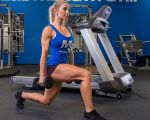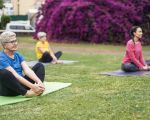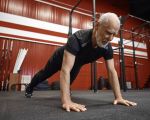- 1-Understanding-Bodyweight-Workouts
- 2-Setting-Goals-for-Your-Workout-Plan
- 3-Essential-Bodyweight-Exercises
- 4-Structuring-Your-Workout-Routine
- 5-Progression-and-Variation-Tips
- 6-Common-Mistakes-to-Avoid
1. Understanding Bodyweight Workouts
Bodyweight workouts are a versatile and accessible form of exercise that use your own body weight as resistance. Unlike workouts requiring equipment or gym memberships, bodyweight exercises can be done anywhere, making them ideal for beginners and advanced fitness enthusiasts alike. Understanding the fundamentals of bodyweight training is crucial to building an effective workout plan tailored to your fitness level and goals.
These exercises improve strength, flexibility, endurance, and balance by engaging multiple muscle groups simultaneously. Popular movements include push-ups, squats, lunges, and planks. What makes bodyweight workouts especially appealing is their adaptability; you can modify the intensity, repetitions, or rest intervals to suit your progress.
Many fitness experts highlight bodyweight training’s effectiveness in promoting functional fitness — the type of strength that enhances daily movements and overall health. This holistic approach to fitness also reduces injury risk by emphasizing controlled movement and proper form.
2. Setting Goals for Your Workout Plan
Before crafting your bodyweight workout plan, it’s essential to define clear, achievable goals. Are you aiming to build muscle, increase endurance, lose weight, or improve mobility? Your goals will shape the exercises you select, the volume of training, and the progression strategy.
For example, if your goal is fat loss, you may focus on high-repetition circuits with minimal rest to elevate heart rate and burn calories. Conversely, building muscle strength might involve slower, controlled movements with fewer repetitions but more sets. Setting SMART (Specific, Measurable, Achievable, Relevant, Time-bound) goals ensures that your progress is trackable and motivates consistent effort.
Many successful fitness journeys start with goal setting. Take Sarah, a 32-year-old working professional, who used goal-oriented bodyweight training to lose 15 pounds in 3 months by combining strength exercises with cardio circuits designed for fat burn.
3. Essential Bodyweight Exercises
A well-rounded bodyweight workout plan includes foundational movements targeting all major muscle groups. Key exercises include:
- Push-Ups: Target chest, shoulders, and triceps.
- Squats: Strengthen legs and glutes.
- Planks: Develop core stability and endurance.
- Lunges: Improve balance and leg strength.
- Burpees: Combine cardio with full-body strength.
Each exercise can be modified to increase or decrease difficulty. For instance, knee push-ups can ease beginners into the movement, while plyometric push-ups challenge advanced users. Incorporating these core exercises ensures balanced development and functional fitness.
Fitness professionals often emphasize mastering form over quantity. Proper technique maximizes benefits and minimizes injury risk.
4. Structuring Your Workout Routine
Effective workout plans require thoughtful structuring. A common approach is the circuit training format, where you perform a series of exercises back-to-back with minimal rest, followed by a recovery period. Alternatively, a split routine targets different muscle groups on different days to allow recovery.
For beginners, starting with 3 workouts per week, 20-30 minutes each, focusing on full-body circuits, builds a solid foundation. Intermediate trainees might increase frequency to 4-5 times weekly, adding variations and increasing intensity.
Warm-ups and cool-downs are vital components often overlooked. Dynamic stretches before and static stretches after workouts help prevent injury and aid recovery.
5. Progression and Variation Tips
To continue making progress, your bodyweight workout plan must include progression strategies and variations. Progression can be achieved by increasing repetitions, sets, or decreasing rest times. Adding complexity, such as transitioning from standard squats to pistol squats, challenges muscles further.
Variation prevents plateaus and keeps workouts engaging. Incorporate different exercise sequences, tempo changes, or add isometric holds. For example, mixing jumping lunges with static lunges enhances both power and stability.
Regularly assessing your performance and adjusting your plan accordingly ensures ongoing improvement and prevents boredom.
6. Common Mistakes to Avoid
When building a bodyweight workout plan, several common pitfalls can hinder results. Overtraining without adequate rest may cause fatigue and injury. Neglecting proper form in favor of higher reps reduces effectiveness and increases risk.
Another mistake is failing to set realistic goals or track progress, which diminishes motivation. Incorporating variety too late in the routine can also stall progress.
To avoid these issues, listen to your body, maintain a balanced routine, and consider guidance from fitness experts or platforms like Fitness, which provide tailored plans and resources to help you stay on track.
Final Thoughts on How to Build a Bodyweight Workout Plan
Building a bodyweight workout plan is a practical and effective way to improve fitness without the need for equipment or gym access. By understanding the principles of bodyweight training, setting clear goals, choosing essential exercises, structuring your routine, and implementing progression, you can achieve lasting results.
Stay mindful of common mistakes and continuously adapt your plan to your evolving needs. Whether you’re a beginner or experienced trainee, personalized guidance from Fitness can enhance your workout journey with expert tools and support. Embrace the simplicity and power of bodyweight workouts to transform your health and fitness today.








